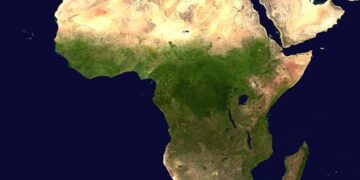On the island of Sardinia, 120 kilometers off the Italian coast, shepherds chase their goats across the mountains, supplying local milk and cheese for the island’s inhabitants. Families live together in multigenerational homes, and friends gather in cafes to share a laugh and a glass of wine after work. As one of the world’s five “blue zones,” Sardinia has long captivated scientists with its high concentration of centenarians, or people living to age 100, that roam its steep streets.
The blue zones — which were named as such when longevity researchers Michel Poulain and Giovanni Mario Pes circled regions of Sardinia on the map with blue ink — are generally thought to include Sardinia as well as Nicoya, Costa Rica; Ikaria, Greece; Okinawa, Japan; and Loma Linda, California. Although there has been some recent debate on whether all of these zones should be considered blue zones, studies show people in places like Nicoya and Sardinia seem to live longer healthier lives. Sardinia, for example, contains twice the number of centenarians than the global average.
Meanwhile, the life expectancy in the U.S., about 76 years, has been on the decline for several years in a row, recently reaching its lowest point since 1996, according to the Centers for Disease Control and Prevention (CDC). The obesity rate in the U.S. is twice the rate of the global average, and Americans experience higher-than-average rates of other chronic illnesses like diabetes. U.S. residents also report higher levels of stress than most other people in the world.
Yet paradoxically, while many in the U.S. seem to be on an endless quest for the latest diet or exercise trend that can maximize their longevity, this attitude is for the most part absent among residents of the world’s Blue Zones, says Dan Buettner, who worked with Poulain and Pes and authored the book, “The Blue Zones Secrets for Living Longer: Lessons From the Healthiest Places on Earth.”
“In America, we tend to pursue health,” Buettner told Salon in a phone interview. “In blue zones, nobody tries to live a long time. … Longevity doesn’t seem to be successfully pursued, but rather it ensues from the right environment.”
Although one of the big questions that remains in longevity research is what role genetics play in the unusually high rates of people living to 100 in blue zones, researchers say there are some things in the lifestyles of the residents of these centenarian-rich regions that may be contributing to their longevity. Here are four of the patterns they’ve noticed hold true across the different regions:
In a meta-analysis of dietary surveys Buettner conducted, about 90% of blue zone resident diets were composed of whole food and plant-based, usually heavily reliant on things like whole grains, greens, beans and nuts. Although the actual cuisine of these five regions differs dramatically, one thing they all have in common is that they are sourced locally and tend to follow their respective natural seasonal trends.
In Okinawa, there is a popular phrase that translates to “belly 80 percent full” that is said habitually before meals to ensure Okinawans don’t overeat. In contrast, many in the U.S. pick up their meals from a drive-thru, supersize it and have no idea where it’s sourced from. According to a study in the Journal of the Academy of Nutrition and Dietetics, portion sizes more than doubled in the U.S. between 1986 and 2016.
“These are some factors we have lost in our society,” Poulain told Salon in a phone interview. “We are trying to eat tomatoes and strawberries all year, and they come from far away. It’s not produced naturally.”
You probably won’t find too many centenarians at the gym, yet physical activity is a constant throughout all blue zones. Instead of following strict exercise regimens that count calories consumed or burned off, residents naturally incorporate movement into their everyday lives. Many stay active or keep working beyond retirement, according to a review of the blue zones published in the Journal of Population Aging.
This level of physical activity is accomplished by walking up and down the steep streets of Sardinia to salute neighbors, kneading bread by hand, or tending to their gardens — which provides the added bonus of sourcing local and seasonal foods.
“These people are in an exceptional physical condition,” Poulain said. “I remember in Ikaria, somebody shook my hand, and I felt it for two days after it was so strong. There is this physical activity that is part of their daily life.”
One study in Finland published in the International Journal of Behavioral Nutrition and Physical Activity found physical activity decreased in retirees over time after they stopped working. It’s estimated that about 8% of Americans over 85 reside in assisted living facilities, and that portion is expected to grow. Yet the majority of nursing homes have insufficient safety protocols in place — as was highlighted when 200,000 residents died in the pandemic — and a loneliness epidemic contributing to poor health outcomes is estimated one in four older adults in these homes and beyond.
In blue zones like Sardinia, elders are cared for within the family, with siblings sometimes rotating the responsibility of taking care of parents. This is thought to not only reduce loneliness and negative health outcomes for elders but also to be beneficial for the caretakers, who learn from them.
Want more health and science stories in your inbox? Subscribe to Salon’s weekly newsletter Lab Notes.
Actually, close to 40% of the world’s population over 60 lives with family members in this setting, but just 6% of Americans this age do, according to a 2020 Pew Research Center study. Beyond family, older individuals also come together in various social circles across the blue zones — like “moai,” in Okinawa, which are groups of social circles that come together to talk, play games and also pool together group finances when one member needs assistance.
“In Sardinia, women go to church together, and they also have these committed social circles that help people assure that they are never lonely,” Buettner said. “Since they all share healthy behaviors, there is a certain positive contagion that helps people eat the right things and move and stay social.”
In Nicoya, there’s a phrase called “plan de vida” or “life plan,” similar to the French’s “raison d’etre”: a purpose, north star or driving force behind a person’s actions and decisions. In Okinawa, the phrase that portrays a similar idea is “ikiga,” while in Sardinia, it’s “a chent annos,” which roughly means, “see you when we’re 100 years old,” Poulain said.
Buettner said he’s interviewed 380 centenarians and all but five said they belonged to a faith-based community. Regardless of whether they were religious, there was usually some sort of daily ritual like a meditation or something more social like a happy hour after the work day to relax and reconnect to this sense of purpose, he explained.
Across blue zones there also seems to be some reverence for place, Poulain said. Residents live in agreement with their community and the environment around them. In one study in Nicoya, the longevity effect did not apply to residents who had migrated there, which highlights the “importance of the environment, relative to genetics,” according to the study. It emphasizes the importance of connecting with your sense of place or where you are from, rather than connecting to Sardinia or any of the other blue zones themselves, Poulain explained.
“In your country, what you can do is to try to adapt some of the principles of the blue zone like what you eat, how you act during the day and with your family or your community,” Poulain said. “There are many things that you can do individually to try to live longer, but don’t go and be a shepherd in Sardinia or a fisher in Okinawa. You will not succeed in living longer.”
>>> Read full article>>>
Copyright for syndicated content belongs to the linked Source : Salon – https://www.salon.com/2023/10/29/lessons-on-living-to-100-four-blue-zone-strategies-that-can-be-applied-anywhere/































